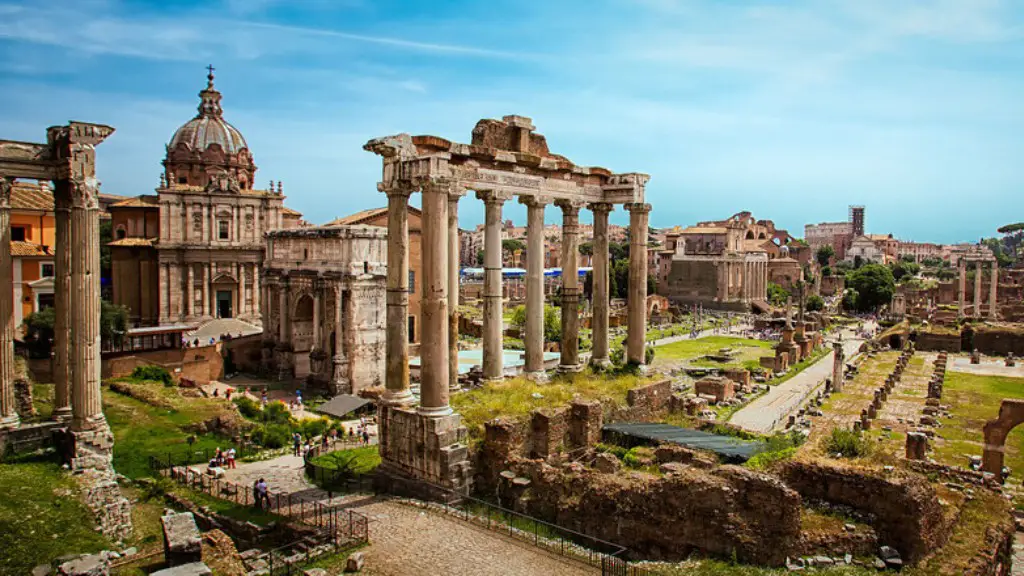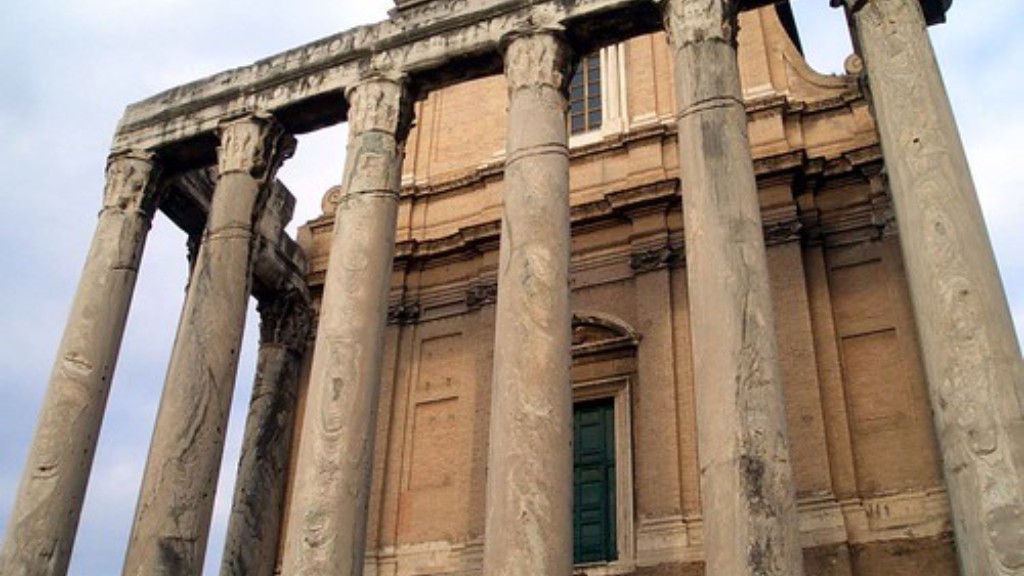Throughout the ancient Roman Empire, gladiators were highly sought after for entertainment purposes. Taking part in blood sports and death matches, their reputation was spread across the Roman Empire. Whether a prisoner, a slave, or a free man, gladiators carried with them an element of fear from those who watched them. So why were gladiators used the way they were in ancient Rome?
Gladiators were traditionally used as a form of entertainment, as they provided an exciting spectacle of gory violence and bloody combat. Highly publicized events often featured gladiators, with the hopes of achieving a high level of excitement. The spectacle of gladiators was seen to reflect the power of Rome and its reach into distant places, as gladiators were often sourced from far-off regions. Gladiators were also associated with high-status people and were a form of social entertainment, with many members of Roman society attending and cheering on the battles.
Gladiators served as a way for Rome to demonstrate its power and prestige. Victorious gladiators furthered the idea that Rome was a way for civilization to progress and that it was capable of both enforcing its will and keeping its citizens entertained with creative shows. Additionally, gladiators had a moralistic purpose. Their battles carried with them the idea of justice, with gladiators representing the vanquished and those who had lost power. By watching the spectacle, Romans reaffirmed their belief that justice should be served and that those who had lost their power deserved to fall before Rome’s might.
However, not all gladiators were successful. Some were defeated and died in the arena, as did some of their defeated opponents. This spectacle of death gave Roman citizens a sense of security, as they believed that through the use of gladiators, justice was being enforced and those who had lost their power were paying the price. Thus, while gladiators provided a form of entertainment, they also embodied Rome’s power, morality and justice.
Given their status in Roman society, gladiators were highly sought after. Not only were they used as entertainment, but they were also used to demonstrate Rome’s strength and serve as a symbol of justice. Through these measures, gladiators played an important role in establishing the power of Rome and its far reaching reach.
The Popularity of Gladiators
The spectacle of gladiators had no limits in Ancient Rome. They were the most popular form of entertainment not only for their bloody combat, but for their depiction of strength. Gladiatorial games were often organized by those of high status, such as the emperor or members of the ruling class, as a way of demonstrating power, wealth, and prestige. Gladiators attracted thousands of spectators, and the events became highly popular with the general public. Gladiators were celebrated in literature, and idols of them would be placed on windowsills, in temples, and in many other public places such as public baths and forums.
By the first century CE, gladiatorial games were a popular form of entertainment. Gladiators were expensive to house and often dangerous to maintain, yet their services were highly sought after by those who could afford them. They would fight in pairs to the death, and the winner would be rewarded with food and other luxuries. Gladiators were celebrated in stories, art, and literature, cementing their place in the minds of Roman citizens as powerful symbols of strength, courage, and justice.
Gladiators were also a source of education for the Roman public. Citizens were taught about the moral stories behind their spectacles, as well as the legendary feats of strength and courage that were often associated with the gladiators. By witnessing gladiatorial games, citizens could feel closer to their gods and immortalize the warriors of their history.
The Gladiatorial Combat
Gladiatorial combat was a unique form of entertainment, and was often cruel and extremely violent. Gladiators would battle to the death, with the audience expecting great feats of strength and perseverance, which would often be rewarded with great amounts of money and rewards. Gladiators were pitted against both animals and fellow humans, and the battles could range from being simple fights to mortal combats. Gladiators would often be wearing protective metal armor and helmets, yet such defenses did not always save them from death or injury.
Gladiators were also subjected to different types of weapons, such as daggers, spears, and swords. As they fought their opponents, they were applauded and even cheered on by their audience. For the victor, there was honor and glory, and for the loser, there was death and humiliation. In the end, it was the audience’s pleasure which was most important and the gladiators often suffered greatly in the pursuit of entertainment.
The Life of a Gladiator
With the large popularity of the gladiatorial fights, there was also a great demand for gladiators. They enjoyed a certain celebrity status, yet their life was far from ordinary. They were required to be on call for long days and perform highly physical tasks. It was not only their fighting prowess that was showcased, but their intense training regimen as well. Gladiators practised various weapon forms, as well as wrestling and unarmed combat, to prepare for their fights.
The life of a gladiator was not easy and often brought with it various difficulties and suffering. They often lacked proper medical care, and were prone to diseases and infections due to their close proximity to their opponents. In addition, gladiators were often isolated from their families and peers, and lived a life of solitude and confinement. Life in the arena was also often dangerous, as the gladiators were often pitted against fierce and wild animals.
The Decline of Gladiatorial Games
Despite their popularity, the gladiatorial games eventually started to decline in popularity. Many Romans began to view them as barbaric and a violation of human rights. Despite an initial emphasis on justice, many people began to see gladiatorial games as being too cruel. In fact, during the reign of Emperor Constantine I, many of the gladiatorial games were abolished. As the Roman Empire progressed, gladiatorial games became increasingly rare and with time, eventually faded completely from the culture.
Legacy and Impact of Gladiators
The legacy and impact of gladiators can still be seen today. The use of gladiators as part of Rome’s entertainment was highly influential and had a lasting impact. Gladiatorial games were seen as a form of entertainment and political demonstration and showcased Rome’s dominance and offered moral instruction. Gladiators had a powerful presence in the ancient Roman world, and their legacy can still be felt in some form today.
Conclusion
Gladiators were an important part of the Roman Empire and were used as a form of entertainment and political demonstration. Despite their gruesome nature, gladiators were popular with the general public and were seen as strong figures, demonstrating greatness and morality. The gladiatorial games were eventually abolished but their legacy could still be seen in the Roman Empire and, to some extent, in today’s world.



